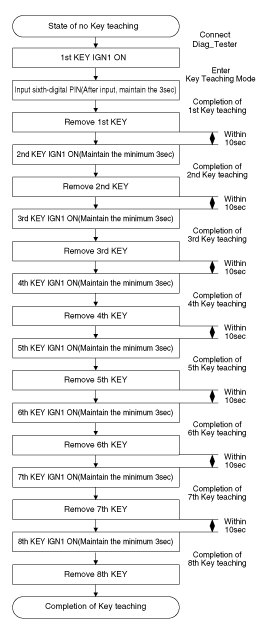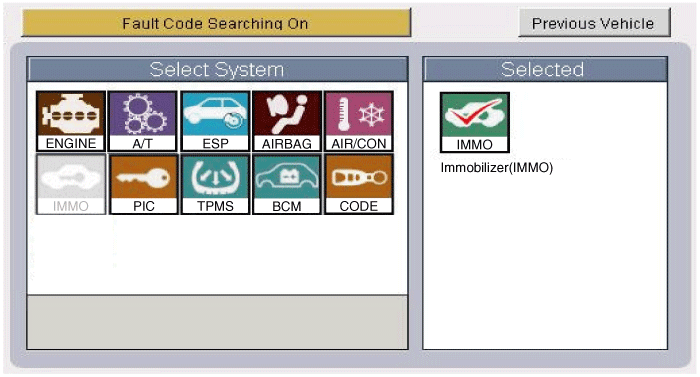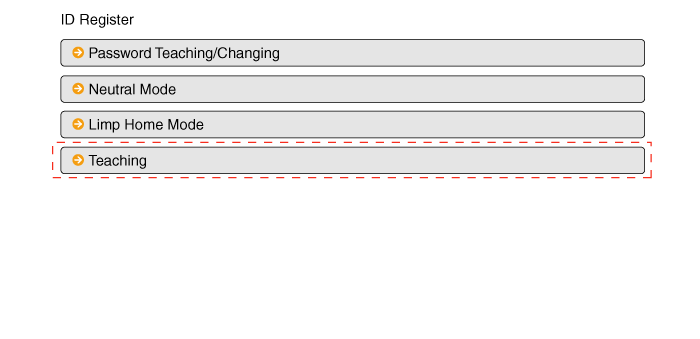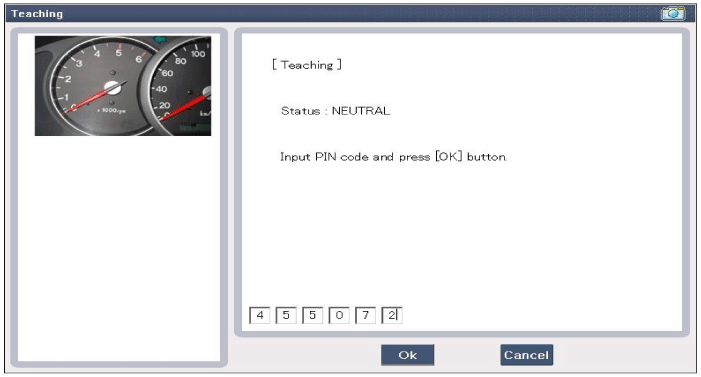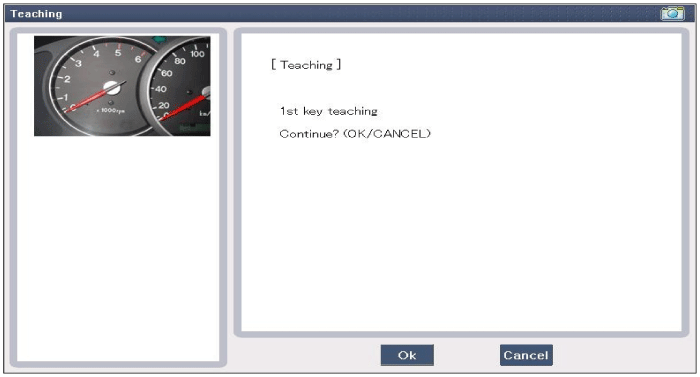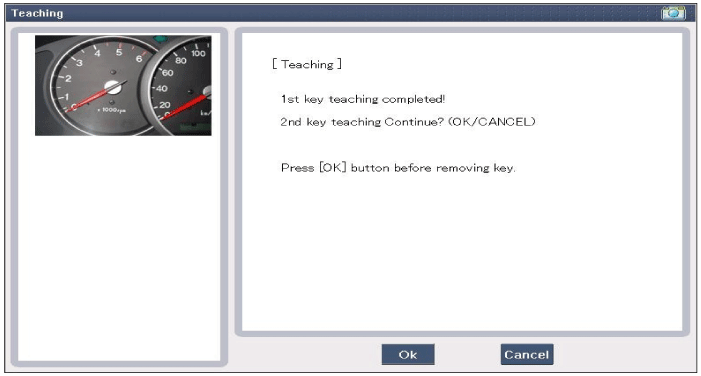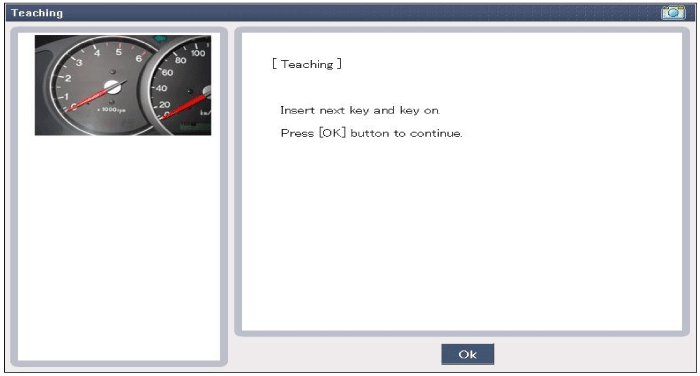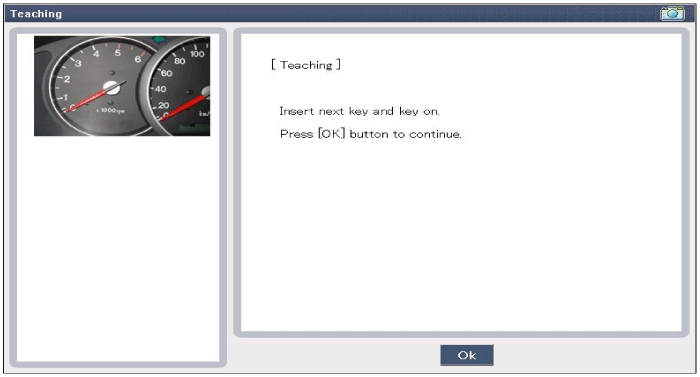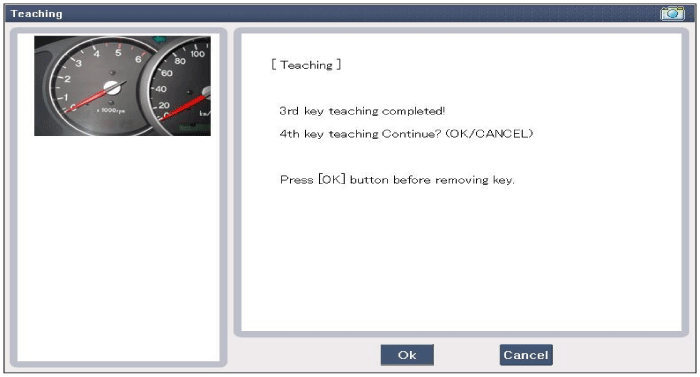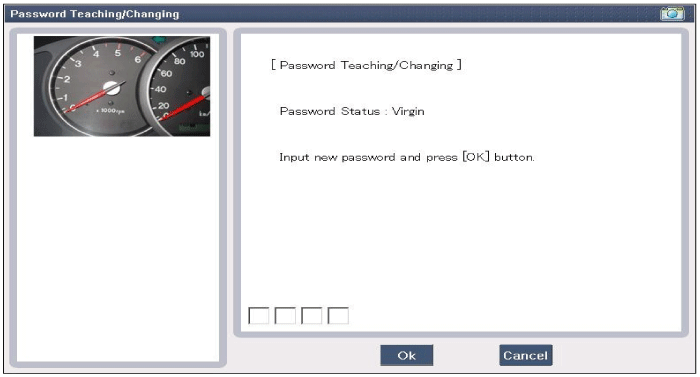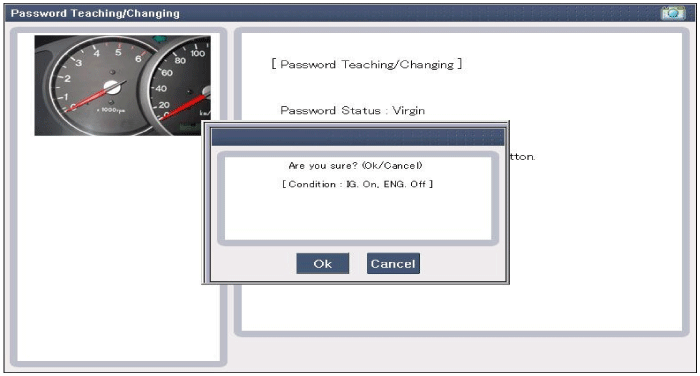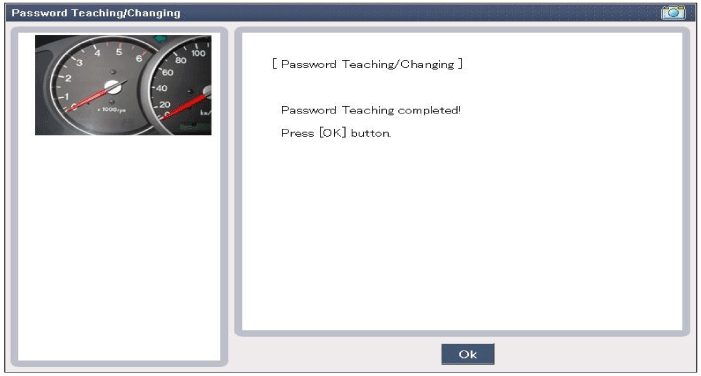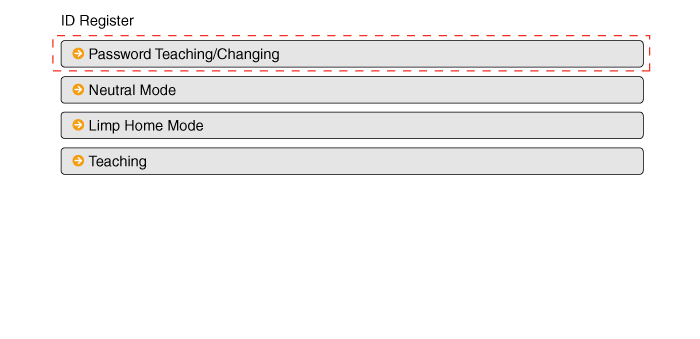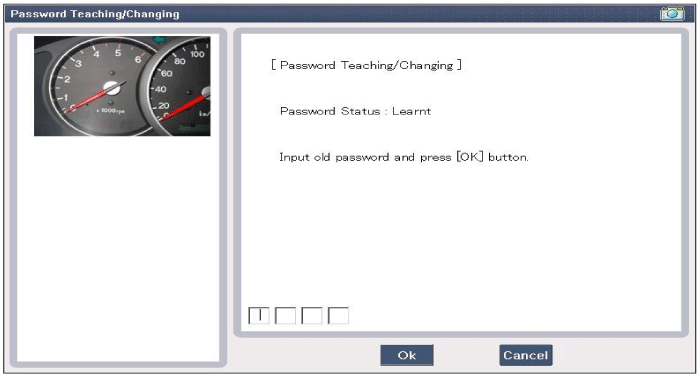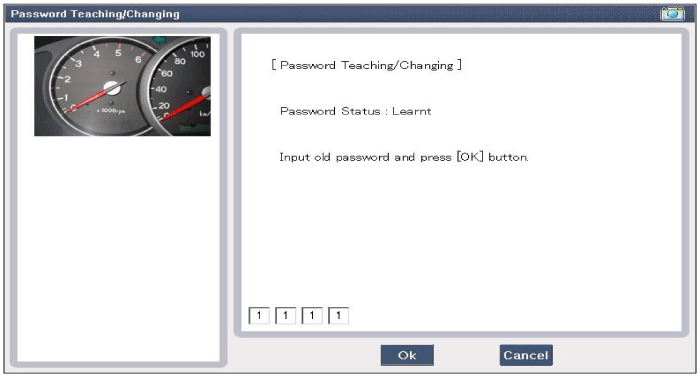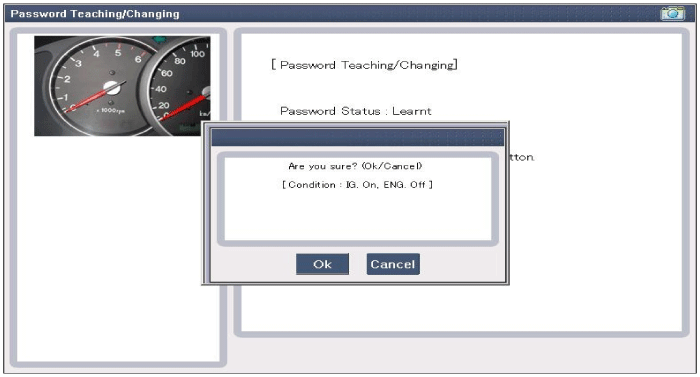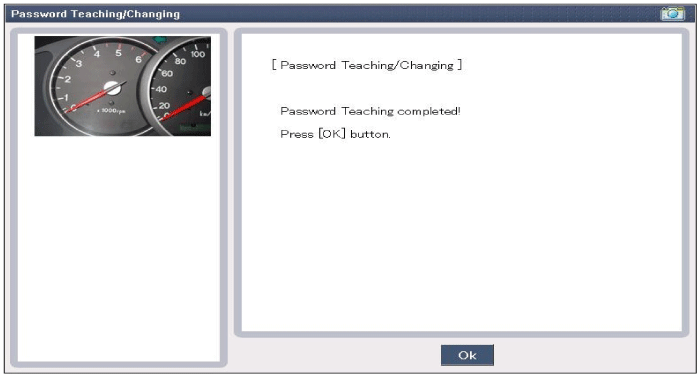 Kia Rio: Teaching Procedures
Kia Rio: Teaching Procedures
| 1. |
Key Teaching Procedure
Key teaching must be done after replacing a defective ECM or when
providing additional keys to the vehicle owner.
The procedure starts with an ECM request for vehicle specific
data (PIN code: 6digits) from the tester. The "virgin" ECM stores the
vehicle specific data and the key teaching can be started. The "learnt"
ECM compares the vehicle specific data from the tester with the stored
data. If the data are correct, the teaching can proceed.
If incorrect vehicle specific data have been sent to the ECM three
times, the ECM will reject the request of key teaching for one hour.
This time cannot be reduced by disconnecting the battery or any other
manipulation. After reconnecting the battery, the timer starts again
for one hour.
The key teaching is done by ignition on with the key and additional
tester commands. The ECM stores the relevant data in the EEPROM and
in the transponder. Then the ECM runs the authentication required for
confirmation of the teaching process. The successful programming is
then confirmed by a message to the tester.
If the key is already known to the ECM from a previous teaching,
the authentication will be accepted and the EEPROM data are updated.
There is no changed transponder content (this is impossible for a learnt
transponder).
The attempt to repeatedly teach a key, which has been taught already
during the same teaching cycle, is recognized by the ECM. This rejects
the key and a message is sent to the tester.
The ECM rejects invalid keys, which are presented for teaching.
A message is sent to the tester. The key can be invalid due to faults
in the transponder or other reasons, which result from unsuccessful
programming of data. If the ECM detects different authenticators of
a transponder and an ECM, the key is considered to be invalid.
The maximum number of taught keys is 8
If an error occurs during the Immobilizer Service Menu, the ECM
status remains unchanged and a specific fault code is stored.
If the ECM status and the key status do not match for teaching
of keys, the tester procedure will be stopped and a specific fault code
will be stored at ECM.
|
Password Teaching/changing
| 1. |
User Password Teaching Procedure
The user password for limp home is taught at the service station.
The owner of the vehicle can select a number with four digits.
The user password teaching is only accepted by a "learnt" ECM.
Before first teaching of user password to an ECM, the status of the
password is "virgin" No limp home function is possible.
The teaching is started by ignition on, with a valid key(learnt
key) and sending the user password by tester. After successful teaching,
the status of the user password changes from "virgin" to "learnt"
The learnt user password can also be changed. This can be done
if the user password status is "learnt" and the tester sends authorization
of access, either the old user password or the vehicle specific data.
After correct authorization, the ECM requests the new user password.
The status remains "learnt" and the new user password will be valid
for the next limp home mode.
If wrong user passwords or wrong vehicle specific data have been
sent to the ECM three times continuously or intermittently, the ECM
will reject the request to change the password for one hour. This time
cannot be reduced by disconnecting the battery or any other actions.
After reconnecting the battery, the timer starts again for one hour.
|
| 2. |
User password teaching
※ In case of putting wrong password, retry from first step after
10 seconds.
|
| 3. |
User password changing
|
 Replacement
Replacement
Problems And Replacement Parts:
Problem
Part set
Scan tool required?
All keys have been lost
Blank key (4)
YES
Antenna coil unit does n ...
 Limp Home Function
Limp Home Function
1.
Limp Home By Tester
If the ECM detects the fault of the Immobilizer or transponder,
the ECM will allow limp home function of the immobilizer. Limp home
is o ...
See also:
High Pressure Fuel Pump Removal
In case of removing the high pressure fuel pump, high pressure
fuel pipe, delivery pipe, and injector, there may be inju ...
Circuit Diagram
(M/T)
(A/T)
...
Waveform
This example shows a typical Crankshaft Position Sensor(CkPS) and Camshaft
Position Sensor(CMPS) waveform at idle.The PCM controls the injection and ignition
timing by using these sig ...
Copyright © www.kirmanual.com 2014-2025


